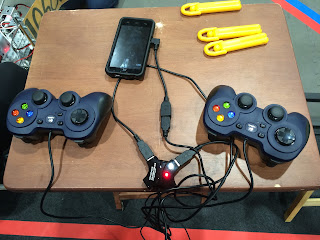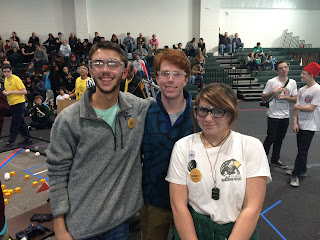Almost every kid loves Legos. Duh! I'm sure this isn't breaking news for anyone who's reading this. But using Legos in your classroom is new territory for a lot of teachers in our district. I've seen them in collaboratory labs and in after-school activities, but typically Legos haven't been seen as a way to enhance instruction. Well, let me introduce you to a teacher who has become a leader in integrating Legos into her classroom to build (see what I did there?) on her curriculum.
Meet Mrs. Morris. Mariah Morris is a second grade teacher at Aberdeen Primary School. She is a newbie in the elementary classroom, but you wouldn't know it by observing one of her lessons. Formerly a high school literature teacher, Mrs. Morris is only in her second year at APS and she has quickly become a Lego master. She has created engaging lessons through the use of the
Lego WeDo kits from the Lego Education Group. I sat down with Mrs. Morris to pick her brain and find out how she utilizes the Legos so that I could share her knowledge with anyone who wants to use them in their classroom but may be unsure of how to do it.
Here's some of our interview:
What inspired you to integrate Legos into your classroom?
Originally, Dr. Capps sent me to the training and I felt like the kits were the perfect way to make the curriculum come to life in a STEM capacity. I think that the kinesthetic students and the visually learners are able to tap into the lesson. It introduces students into 21st century skills. I had students who wanted to be bus drivers before but now they want to be engineers. It’s been a huge gateway into higher education and learning options for their future.
What are some of the topics/standards that you’ve addressed with the WeDo kits?
We connected it to the math using the soccer player to hit some of our measurement standards. In science we addressed the force in motion standard by creating a spinning top. We’ve also introduced them into the basic coding skills for STEM and computer technology.
What are some of the benefits of using the WeDo kits with your students?
It’s been huge. In terms of classroom management, they think we’re this special lego classroom. We bring the lesson to life. Every student is engaged and you can’t say that for the majority of lessons. It gets kids excited about the lesson in a way that I’ve never seen in all my years of teaching. Students are carrying the build days home with them and they want these resources at home. It’s exciting as a teacher to see the excitement in my student’s eyes. We can see how the curriculum comes to life with hands on activities.
Did you have any obstacles or barriers when you began using the WeDo kits?
At first it was overwhelming having all these kits with my students. But we had the support of the DIFs in our district. I probably wouldn’t have used the kits without them (shameless plug).
What has been your favorite part of using the WeDo kits in your classroom?
It’s fun! For me, the students, we are get excited about the legos. It brings our classroom to life!
Thank you Mrs. Morris for being such an advocate for integrating technology in your classroom. It has been a pleasure working with you. I've grown as a facilitator by observing your lessons and learning new ways to use technology to increase student learning.
- Clint Rogers



















